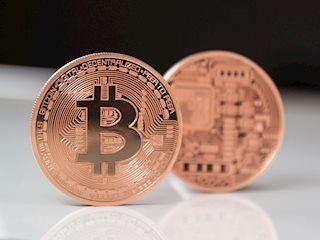Bitcoin and altcoin prices could benefit from cooling inflation, US PPI for July exceeds expectations
|
- US PPI for July 2023 grows by 0.8% YoY, exceeding the expectations of market participants.
- Bitcoin price continued to range below the $30,000 level, after wiping CPI gains.
- Risk assets are likely to see an increase in volatility and a rally in prices as numbers suggest inflation is cooling off.
The US Producer Price Index (PPI) measures the cost of goods from the producers' perspective. This implies that higher PPI numbers signify higher inflation, which could lead to interest rate hikes.
Bitcoin price ranges below $30,000 in response to US PPI data release
Risk assets like Bitcoin typically see a spike in demand from investors in response to rising inflation. In general, inflation tends to devalue a currency in the long term, and applying the same here, it acts as a bullish catalyst for Bitcoin and altcoin prices.
Moreover, it's important to note that the price impact and magnitude of the rally in risk assets also depends on other economic indicators and catalysts in the ecosystem.
The US PPI inflation rate was expected to rise from 0.1% to 0.7% YoY in July, but it exceeded market expectations by a slim margin coming at 0.8%. This number is likely to convince the US Federal Reserve that inflation is under control and there is no necessity for future interest rate hikes.
The PPI data reveals costs are cooling mainly in line with market expectations and Bitcoin has shown bullishness around the numbers. If the US Federal Reserve has less need for aggressive interest rate hikes, it is a bullish sign for BTC holders and traders. Just as higher interest rates are known to bring BTC price rallies to a grinding halt, the opposite is true.
Bitcoin price could make a comeback above the $30,000 level in the week following the release, in the presence of other catalysts in the markets.
Inflation FAQs
What is inflation?
Inflation measures the rise in the price of a representative basket of goods and services. Headline inflation is usually expressed as a percentage change on a month-on-month (MoM) and year-on-year (YoY) basis. Core inflation excludes more volatile elements such as food and fuel which can fluctuate because of geopolitical and seasonal factors. Core inflation is the figure economists focus on and is the level targeted by central banks, which are mandated to keep inflation at a manageable level, usually around 2%.
What is the Consumer Price Index (CPI)?
The Consumer Price Index (CPI) measures the change in prices of a basket of goods and services over a period of time. It is usually expressed as a percentage change on a month-on-month (MoM) and year-on-year (YoY) basis. Core CPI is the figure targeted by central banks as it excludes volatile food and fuel inputs. When Core CPI rises above 2% it usually results in higher interest rates and vice versa when it falls below 2%. Since higher interest rates are positive for a currency, higher inflation usually results in a stronger currency. The opposite is true when inflation falls.
What is the impact of inflation on foreign exchange?
Although it may seem counter-intuitive, high inflation in a country pushes up the value of its currency and vice versa for lower inflation. This is because the central bank will normally raise interest rates to combat the higher inflation, which attract more global capital inflows from investors looking for a lucrative place to park their money.
How does inflation influence the price of Gold?
Formerly, Gold was the asset investors turned to in times of high inflation because it preserved its value, and whilst investors will often still buy Gold for its safe-haven properties in times of extreme market turmoil, this is not the case most of the time. This is because when inflation is high, central banks will put up interest rates to combat it.
Higher interest rates are negative for Gold because they increase the opportunity-cost of holding Gold vis-a-vis an interest-bearing asset or placing the money in a cash deposit account. On the flipside, lower inflation tends to be positive for Gold as it brings interest rates down, making the bright metal a more viable investment alternative.
Like this article? Help us with some feedback by answering this survey:
Information on these pages contains forward-looking statements that involve risks and uncertainties. Markets and instruments profiled on this page are for informational purposes only and should not in any way come across as a recommendation to buy or sell in these assets. You should do your own thorough research before making any investment decisions. FXStreet does not in any way guarantee that this information is free from mistakes, errors, or material misstatements. It also does not guarantee that this information is of a timely nature. Investing in Open Markets involves a great deal of risk, including the loss of all or a portion of your investment, as well as emotional distress. All risks, losses and costs associated with investing, including total loss of principal, are your responsibility. The views and opinions expressed in this article are those of the authors and do not necessarily reflect the official policy or position of FXStreet nor its advertisers.